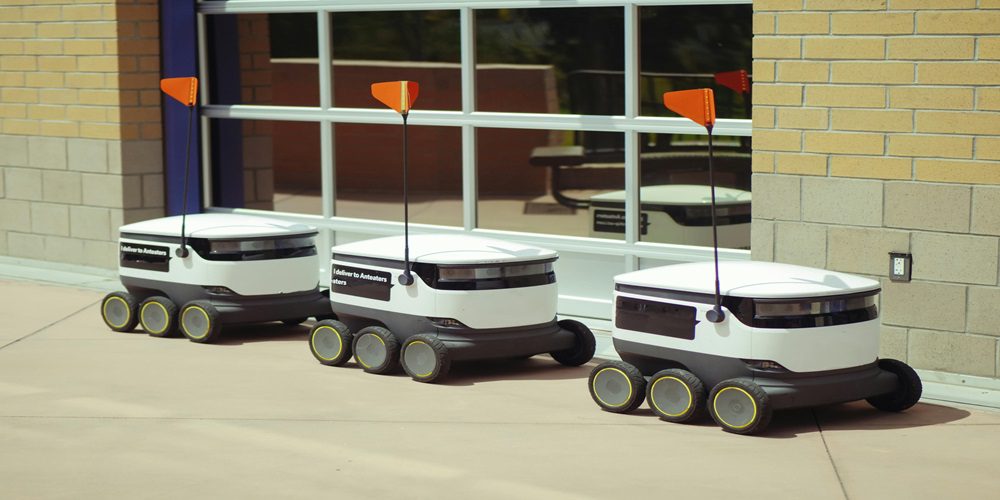Step into the world of tomorrow, where robotics and artificial intelligence are not just the stuff of dreams but integral parts of our daily existence. From self-driving vehicles to voice-commanded virtual assistants, cutting-edge technologies are reshaping the fabric of our lives. Join us as we embark on a journey into the captivating domain of robotics and AI, uncovering the remarkable ways these advancements are sculpting our future. Prepare to be astounded by the marvels that await!
Introduction to Robotics and Artificial Intelligence
The realms of robotics and artificial intelligence (AI) are swiftly evolving, fundamentally altering how we navigate our lives. From mundane household chores to intricate industrial operations, robots and AI systems are making their mark across various sectors. Before we dive into their everyday applications, let’s grasp the essence of robotics and AI.
Robotics, an engineering discipline, encompasses the creation, operation, and utilization of robots. These mechanical or virtual agents, programmed by humans, autonomously execute tasks, spanning from routine household activities to intricate surgical procedures in healthcare settings.
Conversely, artificial intelligence refers to machines emulating human cognitive functions like learning, problem-solving, and language processing. Leveraging algorithms, AI systems analyze vast data sets to derive insights, employing techniques such as machine learning, natural language processing, and computer vision.
The fusion of robotics and AI has birthed intelligent machines capable of sensor-based interactions, data processing, experiential learning, adaptive responses, and autonomous decision-making, sans human intervention.
The History of Robotics and Artificial Intelligence
Tracing back through the annals of time unveils a captivating narrative of robotics and artificial intelligence, spanning centuries. Early inklings of automation date back to ancient civilizations, with tales like Pygmalion’s sculpted likeness or the Hebrew lore of the animated Golem.
However, the 20th century witnessed pivotal strides in robotics and AI. In 1920, Karel Čapek introduced the term “robot” in his play, Rossum’s Universal Robots, sparking discourse on autonomous humanoid creations. Subsequently, in 1956, John McCarthy coined “artificial intelligence,” catalyzing research into machines mirroring human intellect and decision-making prowess.
In 1961, General Motors unveiled Unimate, a robotic arm revolutionizing manufacturing by handling hazardous tasks on assembly lines. Milestones like Stanford University’s Shakey in 1979 and Honda’s ASIMO in 1986 further propelled robotics and AI into the limelight, paving the way for modern breakthroughs.
With the advent of personal computing in the late 20th century, AI research surged, culminating in the 2010s’ introduction of deep learning algorithms, fueling advancements in image recognition, natural language processing, and autonomous systems.
Today, we stand witness to an era where robotics and AI seamlessly intertwine with our daily lives. From virtual assistants to surgical robots, the landscape brims with possibilities, offering tantalizing glimpses into the future.
Current Applications of Robotics and AI in Everyday Life
Recent years have witnessed an exponential surge in the integration of robotics and artificial intelligence into our daily routines. From smart homes to autonomous vehicles, these technologies have become indispensable facets of contemporary living. Here are some prevalent applications:
Smart Homes: Interconnected devices enable remote control of household utilities via AI-driven voice commands or mobile apps, streamlining daily tasks.
Virtual Personal Assistants: AI-powered assistants like Siri and Alexa offer hands-free access to information, reminders, and entertainment, enhancing user convenience.
Autonomous Vehicles: Companies like Tesla and Waymo are pioneering self-driving technology, promising safer, more efficient transportation with reduced human error.
Predictive Maintenance: Industries leverage AI for preemptive equipment maintenance, maximizing operational efficiency and minimizing downtime.
Personalized Shopping: E-commerce platforms employ AI algorithms to curate personalized recommendations based on user preferences and browsing history.
How Will Robotics and AI Impact Our Future?
The ramifications of robotics and AI on our future are profound, chiefly through automation, healthcare advancements, transportation revolution, agricultural innovation, and urban development:
Automation: While automation may lead to job displacement, it also heralds new opportunities in skilled sectors, necessitating a paradigm shift in education and training.
Healthcare: AI-driven surgical robots promise precision and efficiency, while AI-powered diagnostics and therapies revolutionize patient care.
Transportation: Self-driving cars offer safer, more efficient commuting, albeit raising ethical dilemmas regarding decision-making algorithms.
Agriculture: Robotic solutions optimize farming practices, augmenting crop yields and environmental sustainability through data-driven insights.
Urban Development: Envisioned fully automated cities may enhance sustainability, efficiency, and quality of life, albeit requiring stringent regulatory frameworks to address ethical concerns.
Advancements in Robotics and AI Technology
Recent advancements in robotics and AI technology are reshaping industries and augmenting human capabilities:
Integration with AI: The synergy between robotics and AI empowers machines to undertake complex tasks autonomously, revolutionizing sectors like healthcare, manufacturing, and customer service.
Healthcare Innovations: AI-driven surgical robots and wearable exoskeletons enhance precision, mobility, and patient care.
Communication: Natural language processing facilitates seamless human-robot interaction, with chatbots and virtual assistants becoming ubiquitous in customer service.
Decision-making: Machine learning algorithms enable data-driven decision-making in finance, forecasting, and strategic planning, augmenting human expertise.
Ethical Concerns Surrounding Robotics and AI
Despite their transformative potential, robotics and AI raise ethical considerations concerning employment, bias, privacy, accountability, and societal impact:
Job Displacement: Automation may lead to widespread unemployment, necessitating retraining initiatives to equip individuals with relevant skills.
Bias and Privacy: AI algorithms can perpetuate societal biases and compromise individual privacy, necessitating robust regulatory frameworks and ethical guidelines.
Accountability: Determining accountability for AI-driven decisions poses challenges, underscoring the need for transparent governance and responsible development practices.
Societal Impact: Proliferation of robotics and AI may exacerbate social isolation and mental health issues, warranting thoughtful integration strategies.
The Role of Humans in a World Dominated by Robots and AI
In a landscape dominated by robotics and AI, humans retain irreplaceable roles, capitalizing on creativity, empathy, critical thinking, and ethical stewardship:
New Opportunities: While automation reshapes job landscapes, it also creates new roles requiring uniquely human skills, fostering innovation and adaptation.
Ethical Design: Human intervention is essential in designing and programming AI systems with ethical considerations, ensuring inclusivity, transparency, and accountability.
Collaboration: Humans and machines collaborate synergistically, with robots augmenting human capabilities and vice versa, fostering productivity and creativity.
Possibilities for Integration into Daily Life
The integration of robotics and AI into daily life holds boundless potential, enhancing convenience, safety, and quality of life:
Household Assistance: Robotic assistants streamline household chores, while AI-powered systems offer personalized support and companionship.
Healthcare Transformation: Surgical robots and virtual therapists revolutionize patient care, prioritizing precision, accessibility, and empathy.
Business Optimization: AI-driven automation optimizes business processes, from customer service to predictive analytics, fostering efficiency and innovation.
Conclusion
As robotics and AI continue their inexorable march into our lives, embracing the future requires a balanced perspective, leveraging human ingenuity alongside technological prowess. While ethical concerns loom large, prudent regulation and ethical stewardship can harness the transformative potential of robotics and AI for the betterment of



































